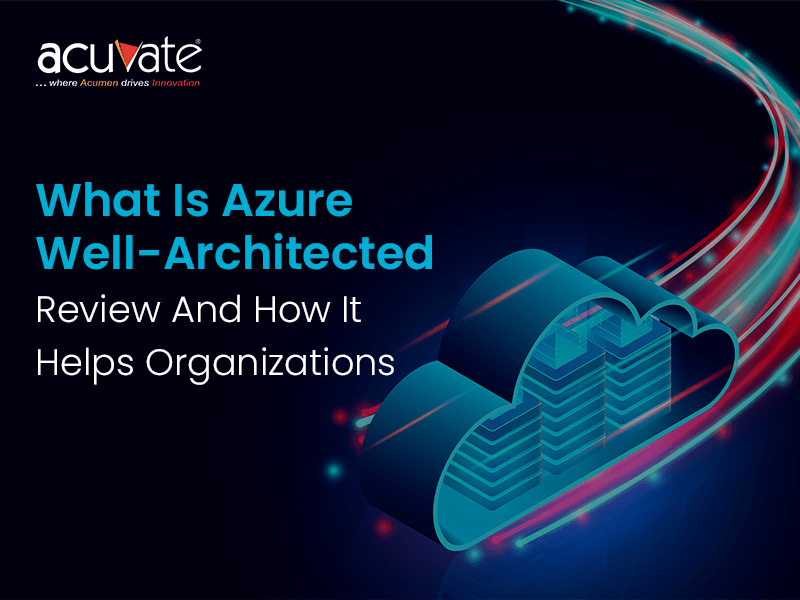Digital Transformation is a term that has been around the market for a good couple of years. But it was only recently that SMBs and large enterprises alike realized the urgency to transform. As a result, businesses accelerated the adoption of AI, automation and became data-driven. However, the unprecedented challenges caused by the pandemic further pushed organizations to host flexible cloud environments that support virtual living and remote working. Therefore, in the age defined by cyber-physical systems, digital twins, and a global health crisis, organizations are rapidly moving operations to the cloud, now more than ever before.
Cloud computing is proving to be a better way to run a business. According to Gartner, the worldwide end-user spending on public cloud services is forecast to grow 20.4% to total $675.4 billion in 2024. That means many organizations are new to cloud technology as they set out to build cloud-native applications or migrate their existing application from on-premises to the cloud. In this scenario, organizations require a step-by-step strategy to move their workloads to the cloud. That’s what the Azure Well-Architected Framework & Review offers.
What is Azure Well-Architected Framework
The complexity of deploying business-critical applications can increase significantly as technology requirements evolve. To help organizations manage this, Microsoft introduced the Azure Well-Architected Framework. The Azure framework is a set of Azure architecture best practices to help new or existing Azure users navigate their cloud journey and get the maximum out of their cloud investment.
The Well-Architected Framework consists of five pillars or tenets: cost optimization, operational excellence, performance efficiency, reliability, security.

These help organizations achieve optimal performance and reliability from their cloud infrastructures. They also help guide and implement strategies to enable businesses to achieve their goals while protecting their investments. This framework allows organizations to design, build, and continuously improve a secure, reliable, and efficient application.
1. Cost Optimization:
As organizations have started investing in cloud solutions, managing existing cloud costs to maximize the value delivered is one of the top cloud initiatives. Therefore, to help organizations gain the most out of their cloud investments, the cost optimization pillar provides principles for striking a balance between meeting business goals and justifying the budget. In other words, cost optimization in cloud architecture means curbing unnecessary expenditures and creating cost-effective workloads that avoid capital-intensive solutions. Microsoft offers the required tools and guidance to manage and optimize Azure costs:
1. Understand and Forecast Costs
- Monitor bills, set budgets, and allocate spending to teams and projects with Azure Cost Management and Billing
- Forecast costs for future investments with the Azure pricing and TCO calculator
2. Cost Optimize Workloads
- Optimize resources with Azure Advisor
- Follow workload design best practices with the Azure Well-Architected Framework
- Save with Azure offers and licensing terms like the Azure Hybrid Benefit and Reservations
3. Control Costs
- Establish spending objectives and policies using the Microsoft Cloud Adoption Framework for Azure
- Implement cost controls in Azure Policy and move faster while complying with the policy
2. Operational Excellence
Operational excellence is a set of principles meant to optimize cloud operations and processes that keep a workload running in production, providing customers an optimized experience. Modern cloud architecture designs should bring in development practices like DevOps and break down existing system and process silos. This integrated view helps in identifying problems early on. Also, through operational evaluation, organizations can identify areas of automation and reduce repetitive processes, thereby diminishing human error and delays considerably. Optimizing cloud operational capabilities leads to faster development and release cycles. Azure helps drive a successful operation excellence architectures by:
- Designing, building, and orchestrating with modern practices
- Using monitoring and analytics to gain operational insights
- Using automation to reduce effort and error
- Using testing in application deployment and ongoing operations
3. Performance Efficiency
The performance efficiency pillar is the ability of the workload to scale efficiently to meet the demands of the users. As cloud adoption is rising amongst businesses, so are the workloads. Before the cloud era, while planning to manage the increase in load, organizations would invest in acquiring oversized workload capacity on-premises to meet the business requirement. However, with the onset of cloud storage, users expect to scale and accommodate the incoming workload. Therefore, scalability is essential aspect organizations seek.
Azure cloud architecture is designed based on performance efficiency principles and scalability to provide an optimal and cost-effective customer experience. Scalability with design and implementation offers lower maintenance costs, increases customer agility, and improves user experience. The performance and scalability of an application can be amplified by:
- Scaling up (add more resources to an instance) and scaling out (add more instances to a service)
- Optimizing network performance
- Optimizing storage performance
- Identifying performance bottlenecks in applications
4. Reliability:
Organizations and businesses require a reliable cloud workload that is resilient and available to recover from failures and continues to function. The reliability pillar principles test the reliability of an application deployed on Azure. Now, with cloud resilience, organizations can:
- Design and operate business-critical systems with ease and confidence
- Define availability and recovery requirements based on decayed workloads and business needs
- Use architectural best practices to identify possible failure points in existing architecture and determine how the application will respond to failures.
- Simulations and forced failovers to test both detection and recovery from various failures
- Use the application consistently using reliable and repeatable processes.
- Monitor application health to detect failures, monitor indicators of potential shortcomings, and also gauge the health of applications
- Respond to failures and disasters by determining how best to address them based on set strategies
5. Security:
Data is the most valuable piece of information that an organization holds. Therefore, security becomes a significant aspect when building cloud architecture as protecting applications and data from various threats takes priority. The Azure platform and security principles provide the required protection against multiple threats, such as network breaches and DDoS (Denial-of-Service) attacks.
Organizations need to think about security throughout the lifecycle of a cloud application – from design, implementation, deployment, and operations. Organizations should follow a multi-layered security protocol across datacentres. A thorough evaluation of technologies and services will help place the proper security controls in the architecture. Azure amplifies cloud security by covering the following broad security areas:
- Identity management
- Protect your infrastructure
- Application security
- Data sovereignty and encryption
- Security resources
What is Azure Well-Architected Review
The Azure Well-Architected framework comprises a self-guided review which is the next step – The Azure Well-Architected Review. This review aims to help organizations assess and evaluate where they are in their Azure cloud migration journey and what their priorities are. Each review section has a short quiz that helps users complete the questions. This makes the review is quite helpful. They help address the hidden requirements to build the best cloud architecture.
The assessment aims to get organizations thinking in a cloud-centric way and collect enough data to help design better Azure architecture solutions for the user. After completing the review, the user is given a score out of 100, which indicates how close they are to achieving the ideal architectural approach. There are also ratings for various areas and suggestions for prioritized actions.
How does Azure Well-Architected Review Help Organizations
The Azure architecture framework and review offer a comprehensive report while evaluating a system against the Azure best practices. This assessment provides clarity about the existing cloud environment and the essential areas that need to be addressed.
Organizations can choose to evaluate a workload against the pillars that matter the most during the evaluation. For example, if needed, a user could look at reliability, performance, and security before moving to the other pillars. The main benefits that the Azure Well-Architected cloud solution offers to organizations are:
- Optimized workloads: Enterprises have the opportunity to be more efficient, productive, and cost-effective as they optimize and rearchitect workloads as per business needs. Ease of scalability and secure access allow organizations to make organizations customize their approach to respond to emerging scenarios.
- Risk mitigation: As an organization designs and builds its cloud architecture, it can better analyze and control risks by gaining clear visibility across data streams, ability to apprehend threats and take pre-emptive actions.
- Acceleration and Invention: With controlled risks and optimized workload, it is now possible for organizations to discover new applications and services to build and deploy with speed. Agility to introduce new products and roll out applications without disrupting business as usual gives organization room to innovate with confidence and ease.
The Azure Well-Architected Framework and Review have provided organizations with a litmus test to understand their cloud architecture and performance better. Robust and well-defined cloud infrastructure can help organizations combat the challenges of the new-normal better by having a grip over their business requirements and the technology response to these requirements. This, in turn, would help organizations listen to their customer and provide better service while they disrupt, innovate and create enhanced experiences.
If you are thinking about getting well-architected while designing and deploying new workloads or optimizing existing workloads, our Azure experts can help. So, book your Azure Well-Architected Review today.



